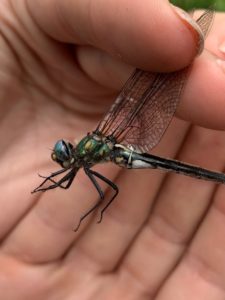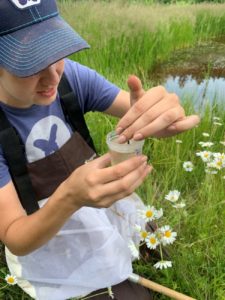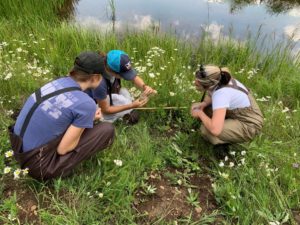Dragonfly Rearing and Reintroduction
Butterfly Pavilion aims to understand the ecology of wild populations of dragonflies, especially threatened, endangered, or declining species. Our goal is to determine husbandry requirements for successful breeding and rearing in support of dragonfly conservation
In 2017, Butterfly Pavilion launched a program to learn more about the husbandry needs of native Colorado dragonfly species as a way to proactively conserve dragonflies in our state against the loss of our native wetlands from habitat and water pollution. Dragonflies are important indicators of ecosystem health, predators that control mosquito and midge populations, and a food source for birds and fish. Colorado provides a variety of unique habitats for these valuable insects, particularly along the Front Range. These alpine and subalpine ecosystems are incredibly narrow and fragile, making the animals that call it home vulnerable to even minor ecological and manmade changes. Butterfly Pavilion is particularly concerned about the Hudsonian emerald (Somatochlora hudsonica). This jet black dragonfly with emerald eyes only occurs in a handful of locations in Colorado and over time has become more difficult to find.

In cooperation with Boulder County Open Space wildlife biologists, we created a plan to develop husbandry protocols to support rearing the Hudsonian emerald under human care. We began by working with a more common cousin called the Mountain emerald (Somatochlora semicircularis). In 2017 we collected eggs from female Mountain emeralds to hatch and rear at Butterfly Pavilion. These baby dragonflies spent three years growing in our aquatic systems under the care of our staff. In June of 2020, we had our first dragonflies emerge as adults, and we released them back into the wild. To the best of our knowledge, this represents the first time anyone successfully reared this species under human care. Thanks to the success of this three-year effort, our scientists continue to venture into the Colorado wilderness to collect eggs from female Hudsonian emeralds to rear at Butterfly Pavilion. The next step is to nurture dragonflies in human care through their entire breeding cycle, informing the future of invertebrate husbandry and efforts to reintroduce native species into the wild.





